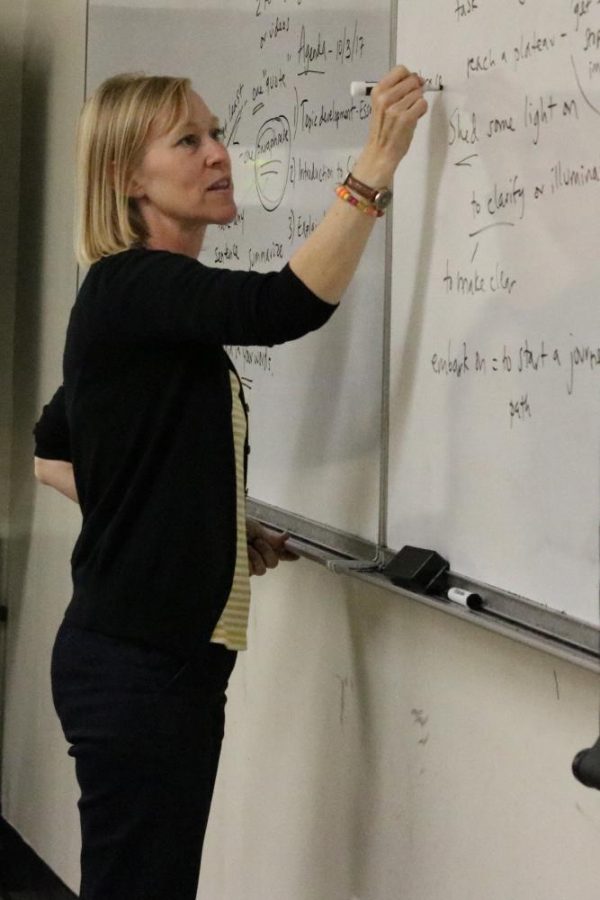ESL population at disadvantage
Flaws predicted with state guided pathway initiative
English as second language professor Shelly Ruby writes on the white board during a lecture in Essay Writing in AA-133 on Thursday.
Oct 11, 2017
The decision to implement guided pathways districtwide may be leaving English as a second language (ESL) students at a disadvantage when it comes to increasing their success rates.
Contra Costa College’s English as a second language department holds a headcount of nearly 300 students enrolled in one of five levels of ESL courses, ESL professor Shelley Ruby said.
Guided pathways pushes for a more direct and speedy way for students to complete a certificate of achievement or degree at a community college.
Ruby said, “It (guided pathways) is a good goal, but for ESL, it’s a different population that may be the administration doesn’t always understand. There is no shortcut to learning a language — you have to really take time. We want them to visit our classes and visit our department meetings to understand how we are different.”
Ruby said ESL students who come to college at the beginning levels of learning a second language need more than two years to get through the program.
Some ESL students come to college to learn a second language and not necessarily to transfer or earn the certificate of achievement that the ESL department offers once the student completes all their ESL requirements, Ruby said.
“I hear students say, ‘I just want to help my kids with their homework.’ It’s not a one size fits all thing. Not everyone is looking for a certificate of achievement.”
The ESL department serves a diverse population of ages and backgrounds, like public speech major Xiuli Meng, who came from China.
“I don’t think that there can be a specific path to get through ESL classes quicker,” Meng said.
“Learning a second language is a long process that takes time to absorb. It doesn’t have a shortcut and everyone has their own way of learning.”
Meng said as an older student in the ESL department he “appreciates” the opportunity to learn while taking ESL 172, Writing IV, and ESL 152, Academic and Professional ESL IV.
With the help received from ESL instructors in class and through the ESL program in the Library and Learning Resource Center, Meng said he has been able to start tutoring this semester.
At the beginning of each semester, the ESL department offers orientation classes that students can attend to ensure they follow steps for student success, Ruby said. They take their assessment test and meet with student assistant Arlette Ordaz, who speaks Spanish and can work with the students to help them register for ESL classes.
“I think it is very important to work with students because some don’t have any idea how to register for classes or how to use the CCC website,” Ordaz said.
She maintains a relationship with the students throughout the semester to help them check their grades online or to help them answer questions they may have about ESL classes.
Ruby said they have found, over time, that students have limited English and limited academic backgrounds. “Some of them may have had little education in their country and coming into a new setting can be difficult to navigate.”
“I can see (guided pathways) happening with our program, but I feel like it would look different.”
Ruby said creating different guided pathways for different groups would be better, like students who want a better job but not a degree, or for students who want to transfer.



